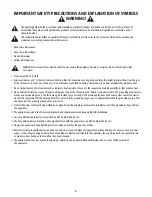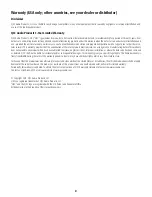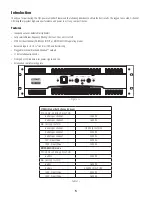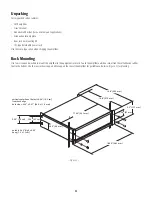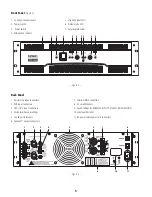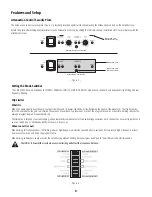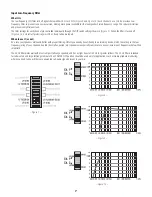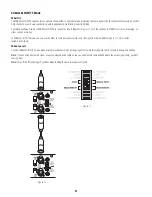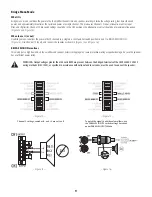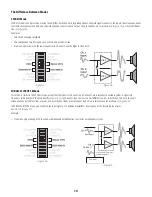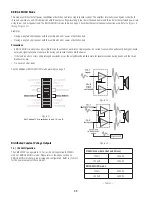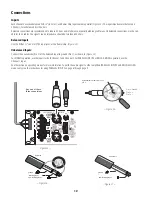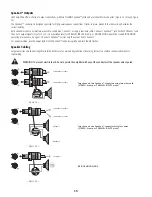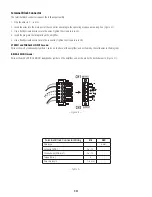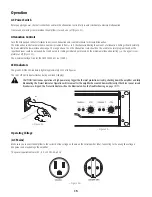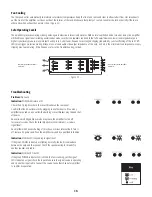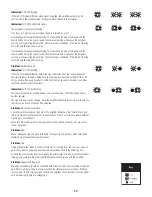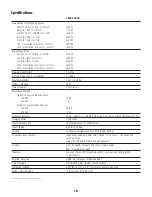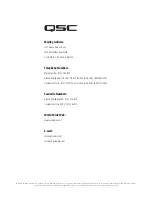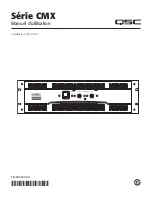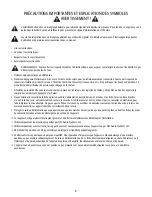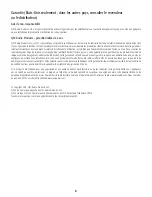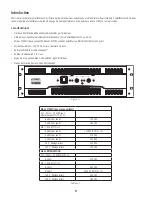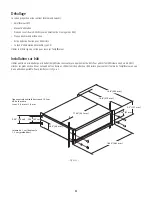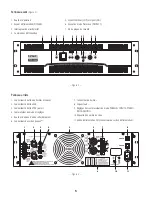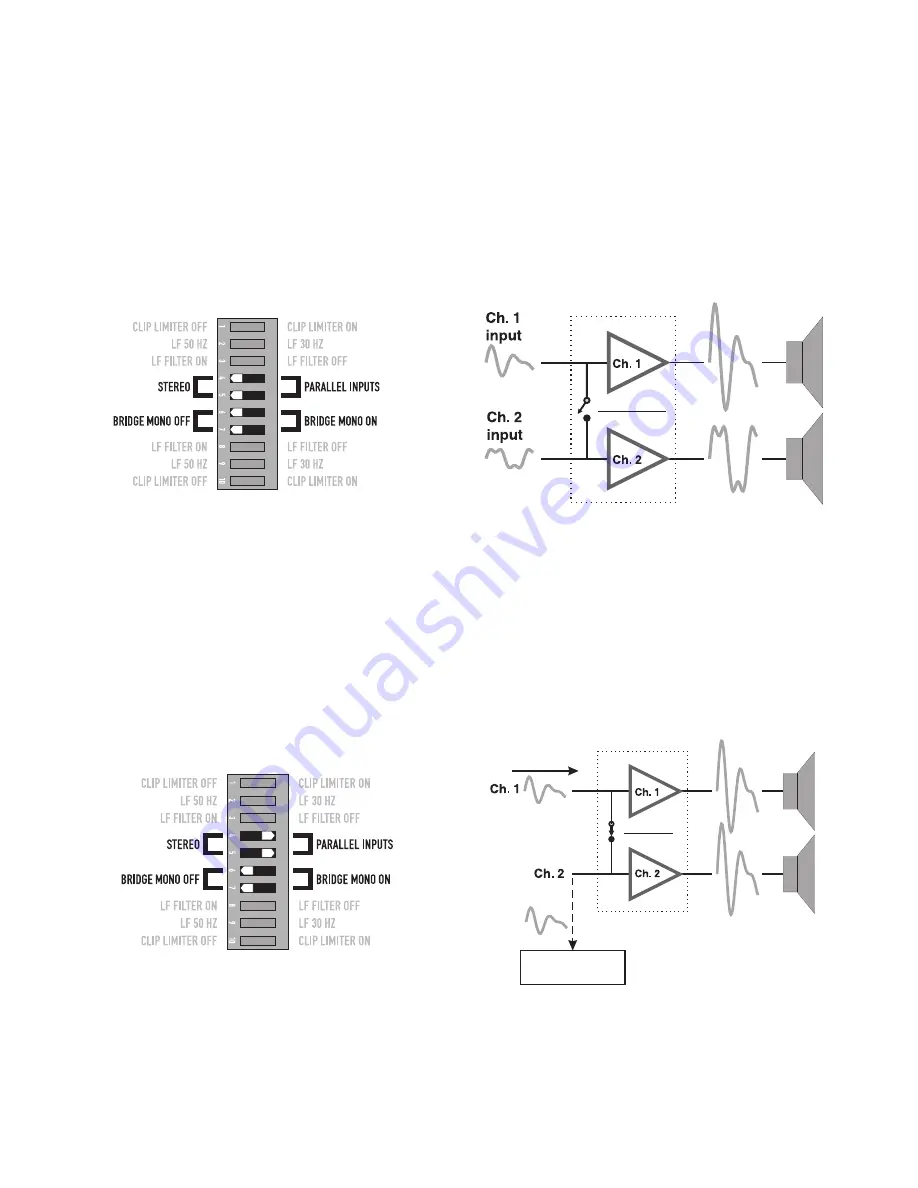
9
10
The Difference Between Modes
STEREO Mode
STEREO mode is the typical way of using the amplifier. Each channel is fully independent. Separate signals connect at the inputs, the attenuation knobs
control their respective channels, and separate speakers connect to each output. The dip switches are set as shown in (
Figure 17)
, a schematic illustra-
tion in (
Figure 18)
.
Examples:
•
Two-channel (stereo) playback.
•
Two independent mono signals, such as main and monitor mixes.
•
Bi-amped operation, with the low frequencies in Channel 1 and the highs in Channel 2.
PARALLEL INPUTS Mßode
This mode is similar to the STEREO mode, except that the inputs for Channel 1 and Channel 2 are internally connected together. A signal into
Channel 1 jack drives both channels directly
(Figure 19)
. Use Channel 1 Input, do not connect different sources to both channels. Each channel's
attenuation control still functions as usual, and each channel feeds its own speaker load. The dip switches are set as shown in
(Figure 20)
.
In PARALLEL INPUTS mode, you can patch the input signal on to additional amplifiers by using any of the remaining input jacks.
See Ch 2 in
(Figure 19)
.
Example:
•
One mono signal driving both channels, with independent attenuation control for each speaker system.
— Figure 17 —
— Figure 18 —
signal input
NO INPUT!
Can be used to Daisy-chain
additional amplifiers
Amplifier #2
— Figure 19 —
— Figure 20 —
Summary of Contents for CMX2000V
Page 1: ...User Manual CMX 2000V Amplifier CMX Series TD 000323 00 TD 000323 00 ...
Page 21: ...Manuel d utilisation Amplificateur CMX 2000V Série CMX TD 000323 00 TD 000323 00 ...
Page 41: ...Benutzerhandbuch Verstärker CMX 2000V Serie CMX TD 000323 00 TD 000323 00 ...
Page 61: ...用户手册 CMX 2000V 放大器 CMX 系列 TD 000323 00 TD 000323 00 ...
Page 81: ...Manual del usuario Amplificador CMX 2000V Serie CMX TD 000323 00 TD 000323 00 ...


